
The big day is here at last. Are you ready for a healthy thanksgiving meal? Don’t let yourself fall off the wagon. We have some healthy tips to get you and yours through Thanksgiving Day. Enjoy!
One of the most American days of the year is upon us. The last thing you want to be thinking about is your caloric intake. But, like it or not, a typical Thanksgiving Day feast can easily pack a wallop of calories, fat, and sodium. Have you ever told yourself, “but it’s just one day?” Unfortunately, the feasting on turkey day often can mark the start to the dreaded holiday weight gain of the coming weeks and months.
The classic Thanksgiving Day spread of rolls, mashed potatoes, green bean casserole, and, of course, the star of the show, a juicy, tasty turkey, is an event we look forward to all year round. But for those of us watching our waistlines, the sky-high amount of calories that comes with this meal leaves plenty of room for improvement.
There’s no reason to forego that slice of pie or deprive yourself of the joy of sinking into some sweet potato casserole, though. After all, the chance comes but once a year. Enjoy your Thanksgiving feast guilt-free with some sneaky tweaks and changes.
And yes it’s more than 2000 calorie meals …
Recent studies found the average Thanksgiving Day meal clocks in at around 2,500 calories. Other sources have reported this number as closer to 4,000 calories, or two days worth of food!
There’s no reason you can’t enjoy the standard Thanksgiving fare while making it lighter and no less delicious.

Why Does This Matter?
With the obesity epidemic in America on a steady upward climb (set to hit 50% by the year 2030), there has never been a more pressing time to be watching what you eat, every day of the year.
Already, at their current rate, health care costs associated with disease and poor health as a result of our expanding waistlines are huge. Many of the leading causes of death in this country, such as heart disease and stroke, are directly linked to so much of our population being overweight.
What does this mean for all of us?
As these numbers continue to climb, the health problems will surely grow as well.
What may seem like a harmless one-day-of-the-year meal may not be quite so harmless. If you’re eating a standard turkey day meal, chances are it will see you consume far more saturated fat, sugar, and sodium than is healthy.
Are you familiar with that post-feast lethargy?
It’s largely due to the calorie excess that goes hand in hand with Thanksgiving.
Don’t swear off the beloved day just yet though.
Why?
There are plenty of ways to still indulge, treat yourself and enjoy the day of family and food without the guilt and bloat that often follows. After all, Thanksgiving Day comes but once a year, and you don’t want to spend it depriving yourself of a special meal. With these trades and lightened-up options, you can still treat yourself with a feast fit for a king or queen, without the calorie bombs.
This Is What To Avoid
A quick look at a standard turkey day spread reveals some common red flags. These ingredients are a dime a dozen in Thanksgiving recipes, but can easily be avoided.
For example, watch out for excessive amounts of butter in everything from your turkey and potatoes to your dinner rolls. Sugar is often lurking in everything as well. You might suspect it in dishes like sweet potatoes, but if you are using a white bread base for your stuffing, there’s more of the sweet stuff hiding in it. Fruits and other healthier sweeteners are often a no-brainer option that will make a huge difference in the healthiness of your meal.
Sodium is another common pitfall. It’s often used in a more heavy-handed manner than needed, such as in broths and side dishes. Simple swaps will slash the sodium count and even add some fresh, edgy flavor to your dishes.
Here Are Some Better Options
As you prepare your feast this year, consider some of the following tweaks. They’ll sacrifice none of the classic flavor you expect with Thanksgiving, but will save you endless calories.
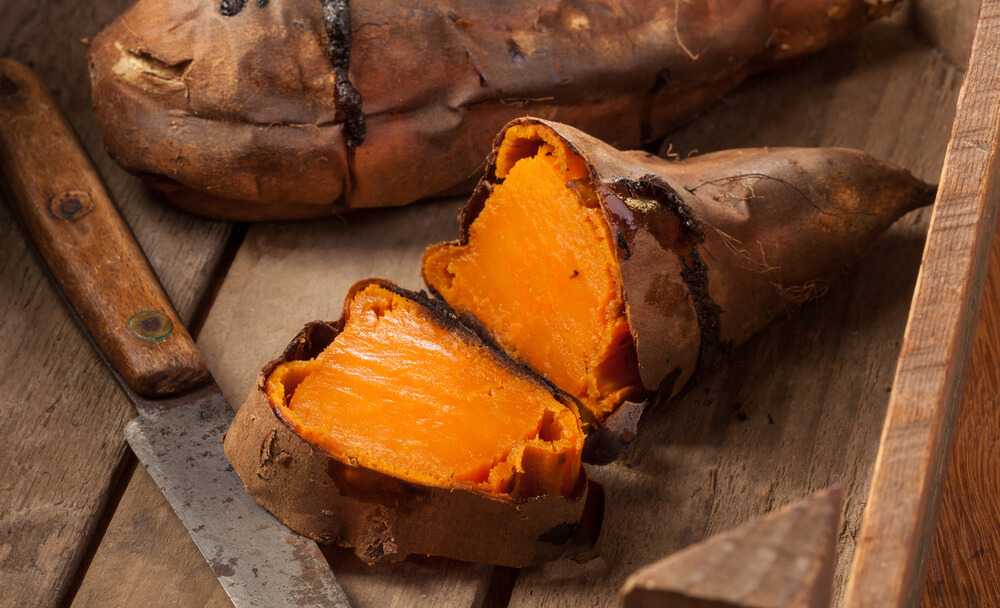
Sweet Potato Casserole
Sweet potatoes are not only a classic comfort food, but they are chockfull of nutrients and vitamins like A and C, plus energy-sustaining carbs. The trouble comes when they’re doused in the sinful stuff.
Your typical Thanksgiving sweet potatoes are swimming in butter and sugar and then crusted with a cap of marshmallows. By halving the sugar, cutting the butter and taking a light hand with the marshmallows, or leaving them off entirely if you won’t miss them, you’ll let the natural flavor of the potatoes shine through with a fraction of the calories and fat.
Even better, consider peeling, cubing and roasting them on a tray with olive oil and spices. You can add root vegetables like beets, turnips or other varieties of potatoes as a new take on the side dish, minus the sugar crash.
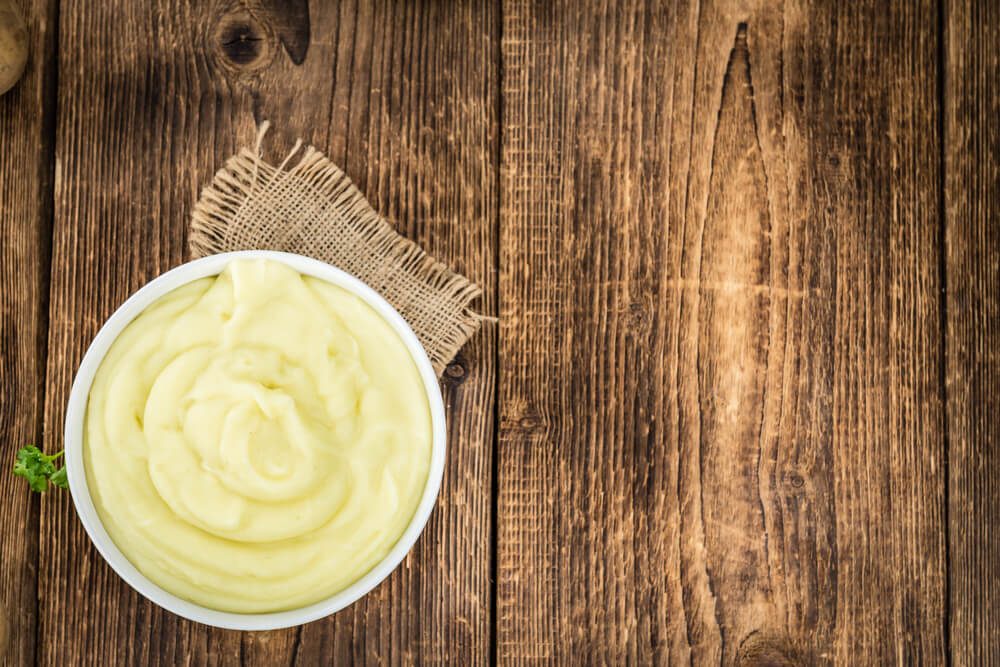
Mashed Potatoes
A typical cup of mashed potatoes, made with plenty of butter and whole milk, can clock in at 237 calories on their own, plus nine grams of fat. That is roughly equal to tossing back a whole bag of M&M’s. There are few dishes more comforting, or more classically Thanksgiving Day, than mashed potatoes, so never fear. A few changes will result in a delicious and far less fattening creation.
Start by avoiding any extra dairy that you can go without. Cream, slabs of butter, add-ins like cheese, sour cream, cream cheese or whole milk should be nixed. When it comes to your base, choose potatoes with flavor that shines through on its own. The Yukon gold variety has a buttery smooth, rich flavor that hardly needs doctoring. This means you can go lighter on any fattening additions that a more basic potato like a russet might require.
Garlic, herbs, tamari, spices, and added pureed cauliflower, parsnips, turnips or other root veggies kick your basic mashed potato side into high gear. Add a dose of veggies and nutrients, and easily replace the flavor kick that salty, fatty ingredients normally provide.
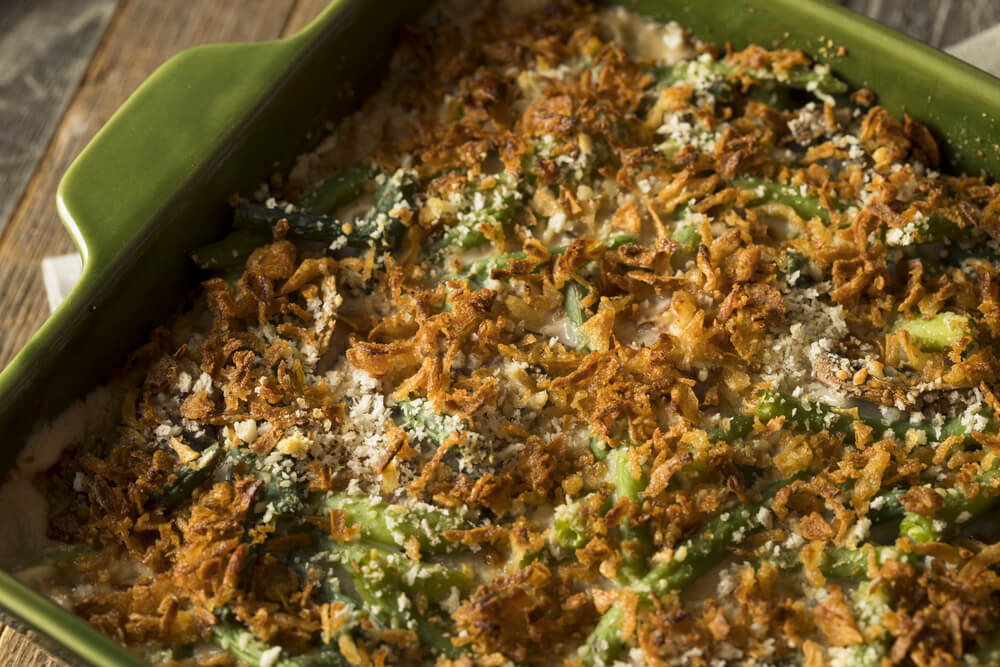
Green Bean Casserole
A standard one cup serving of this gooey, warming comfort food has 250 calories and 17 grams of fat. While that might not seem like too much, this is roughly the same as consuming some brands of personal pizzas, just for one serving of one dish.
Obvious add-ins like fried crispy onion rings and plenty of cheese rack up the calorie count, so lighten up or do without whenever possible. Consider alternatives like sautéed garlic green beans if your dinner guests don’t mind straying from tradition.
If you can’t go without, simply go lighter on the toppings or think about making your own lighter cream of mushroom soup. This will help you avoid many of the unwanted grams of sodium and preservatives. You’ll end up with a fresher, more wholesome dish, fewer calories and all of the comfort.
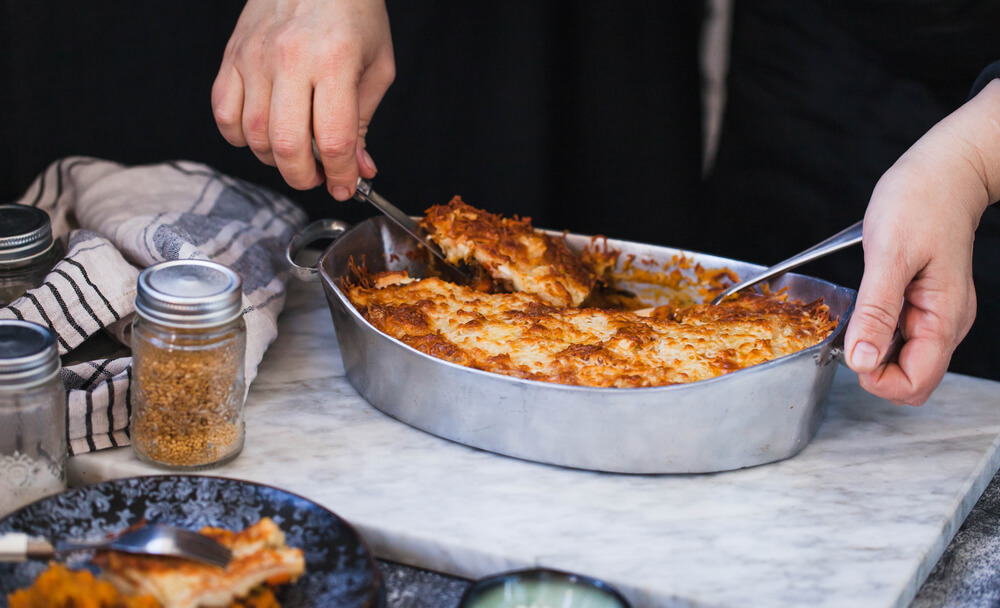
Stuffing
While no Thanksgiving Day table is complete without a side of stuffing, it makes for an easy dish to overdo it on. Considering this: A one-scoop serving can have as many as 550 calories. A mere one-cup serving contains 17 grams of fat. That’s roughly equal to what you’d rack up by eating a chili cheese dog.
While it is hard to totally lighten up a dish that features bread as its main ingredient, you can still enjoy a lighter version with some smarter choices. As a rule of thumb, using a base of cornbread can at least provide a slightly more complex carb than using white bread, which will rapidly convert to sugar and add to that post-meal slump feeling we all know too well. Even better, make a wild rice-based stuffing. This rendition will provide an unexpected savory, nuttiness, and far more nutrients.
Stuffing can also act as a vessel for diet-wrecking add-ins. Watch out for and cut out any extras like excess butter, pork, and sausage. There’s plenty of flavor to be had by using healthier options like low sodium chicken or vegetable broth. For unexpected bite and zest, toss in add-ins like fruits or other energy-dense grains to your dressing recipe.

Turkey
While the star of the show is sure to be a centerpiece on any Thanksgiving Day table, it can also be one the biggest calorie culprits. A standard serving of four slices, which if we’re being honest, we can all easily tuck away during a day of feasting, contains 320 calories and 12 grams of fat.
Since most feasts wouldn’t be complete without turkey meat, though, never fear, some simple tweaks can help you avoid the pitfalls and enjoy all the perks. These changes won’t have your dinner guests missing out on any of the classic flavor we all love either.
A little common sense can save you lots. For example, avoid dark meat in favor of light. In fact, if your get-together is a small one, choose just turkey breast rather than a whole bird.
Why?
It contains more white and lower-calorie meat. The way you prep your bird counts too. Steer clear of deep-frying and instead opt to roast or smoke the meat.
Before you start cooking, you can slash calories and unneeded fat, plus actually boost the flavor, by using olive oil instead of butter. This is still a fat, but it contains more good fats and less of the artery clogging stuff. Turkey skin is loaded with saturated fat as well, so choose lighter meat pieces, minus the skin, for the healthiest cut possible.
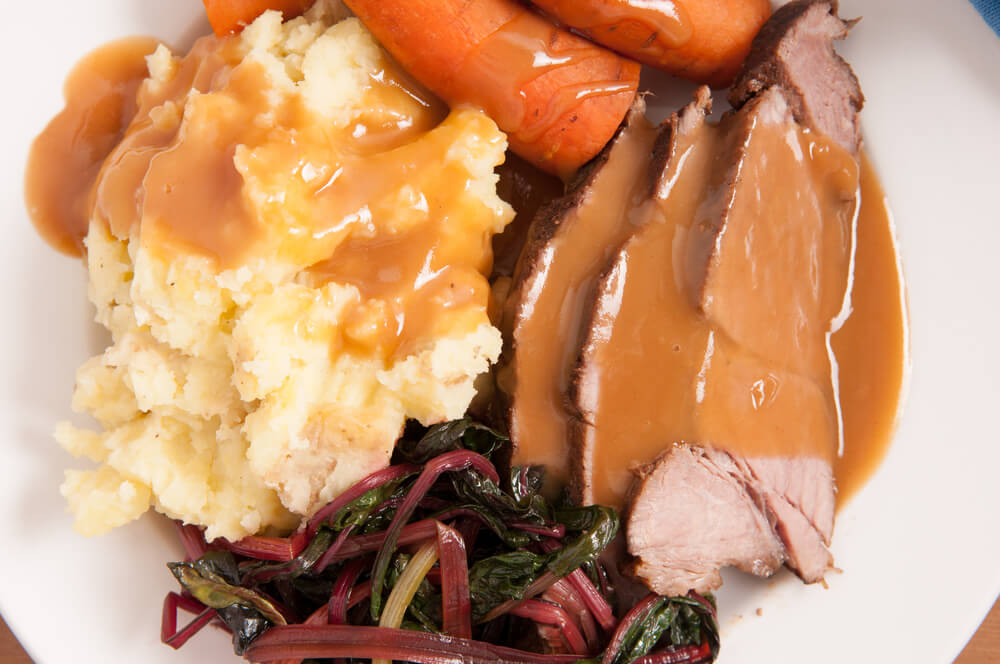
Gravy
A ladleful of gravy can drown your plate not only in a river of delicious flavor but also calories and unhealthy fats. Instead of passing on it entirely, though, you can still enjoy the turkey day classic by lightening it up significantly.
The most obvious tweak to consider is using vegetable oil instead of turkey drippings. While still high in fat, it’s lower in cholesterol and saturated fats, which you should be avoiding if at all possible.
There are also plenty of even lower-fat options that can have a place on your menu such as delicious vegetarian gravy that features mushrooms, nutritional yeast and vegetable broth. Even if you don’t choose to go entirely vegetarian, you can simply use a low-fat broth base for your gravy which will improve the caloric count.
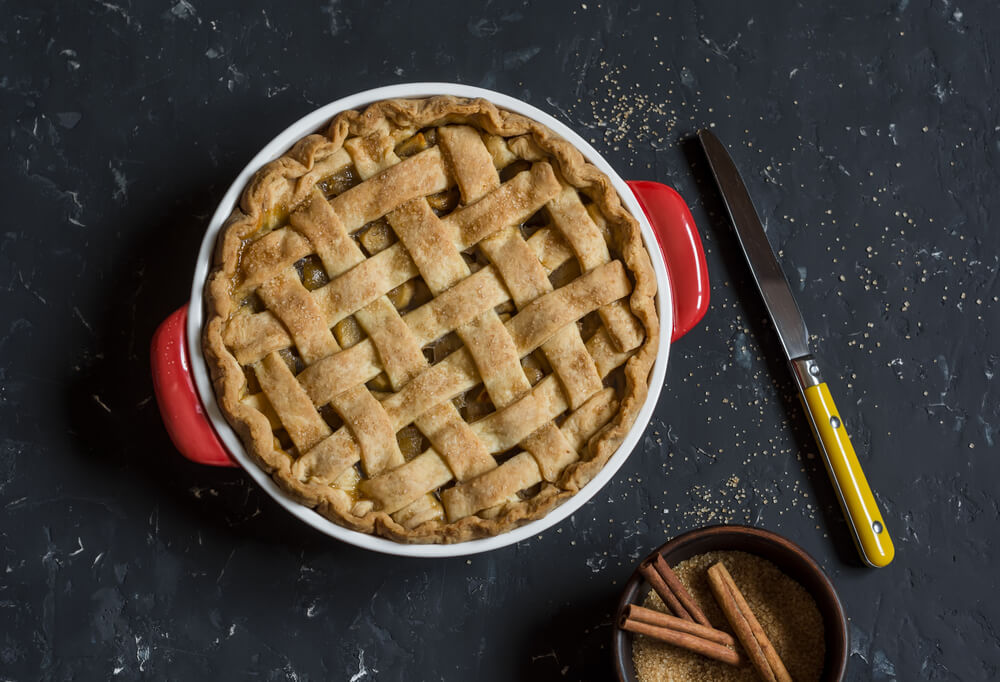
Pie
Thanksgiving dinner wouldn’t be complete without pie. And, let’s be honest, you’re not just having one slice. When it comes to dessert, it’s just that, dessert, so no sense in trying to deprive yourself of the sweet stuff. We suggest you treat yourself and dig in, but choose wisely.
Not all pie is created equal, and pecan pie takes the prize for the most calorie-laden option. Just one slice typically contains around 500 calories. That’s no surprise since nuts make up the base of the pie, and multiple forms of sugar tip it over the edge.
Pumpkin pie is a far healthier and lower-fat option since one slice is a less scary 310 calories. Since pumpkin pie is a simple recipe (usually just pumpkin, egg, spices, and milk), the bulk of the calories are from the crust. If you don’t mind straying from tradition just a bit, opt for a lower-calorie graham cracker crust, or shed the crust entirely and make individual custards in ramekin dishes.
Conclusion
As with any cherished holiday, Thanksgiving comes but once a year. While moderation should always be exercised, a day that centers on family and food is to be enjoyed. No one wants to look back on a holiday and remember feeling deprived of delectable favorites, so don’t fall into the trap of obsessing over calories or laying on the dieter’s guilt. Enjoy your turkey day with all the culinary classics. These simple tweaks won’t deprive you of any of the flavor, just a wealth of needless calories.
By Emmy Schneider-Green
Latest posts by Terry M (see all)
- Garage Gyms - Aug 1, 2018
- Kettlebells – Why They Should Be Added To Your Routine. - Jul 24, 2018
- Weight Belts: What Are They Really For? - May 31, 2018











[…] Download Image More @ gymjunkies.com […]